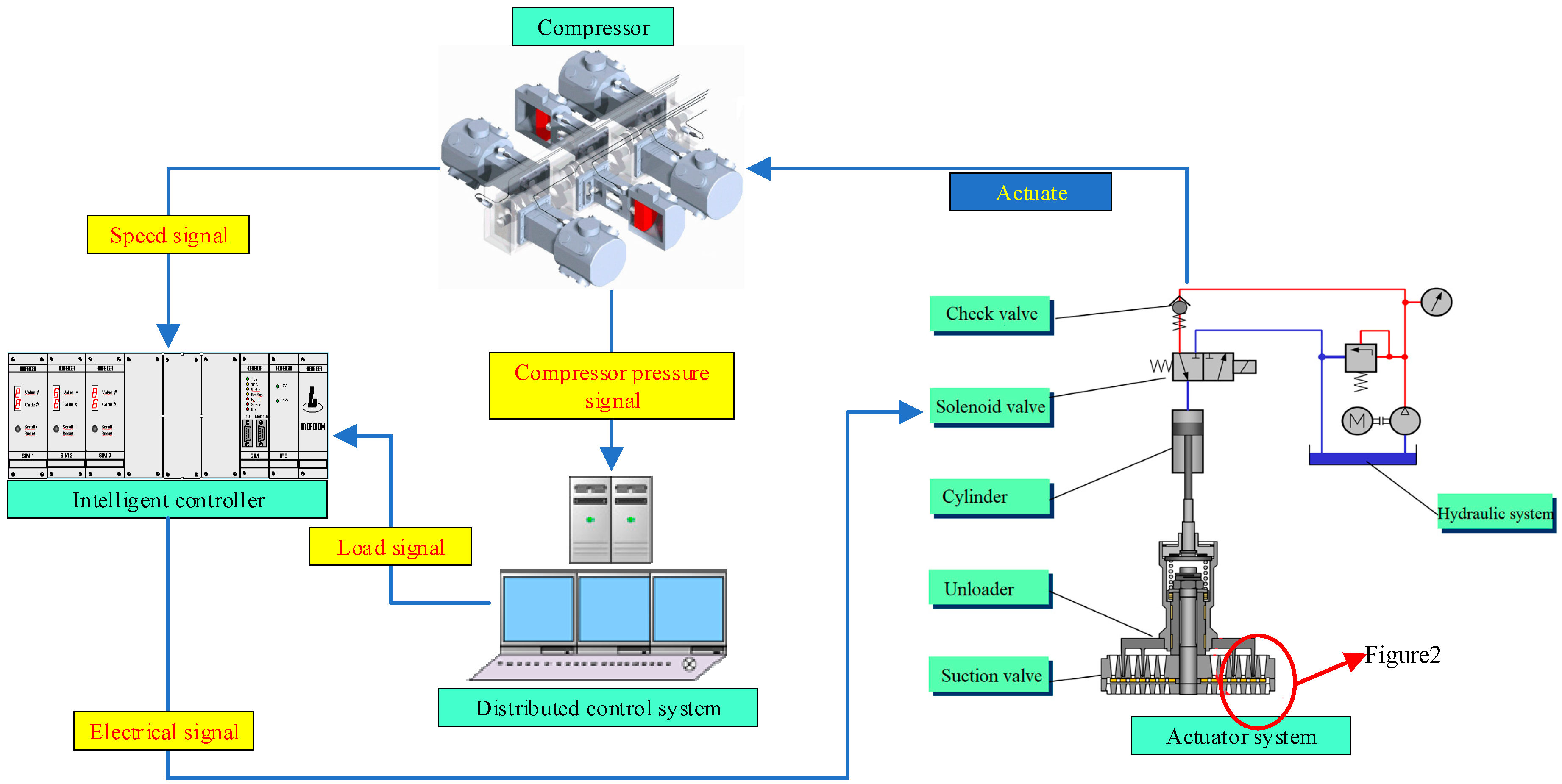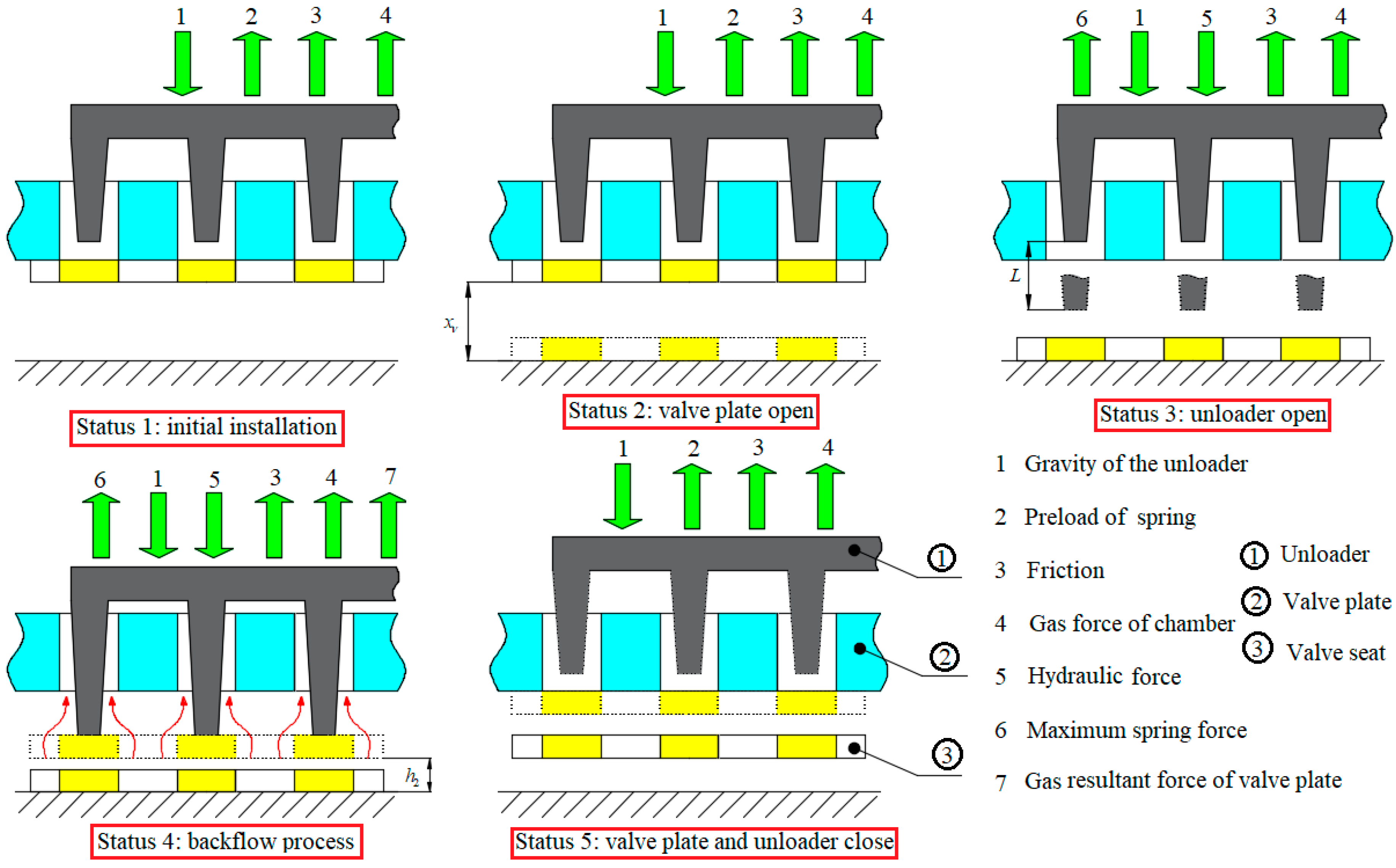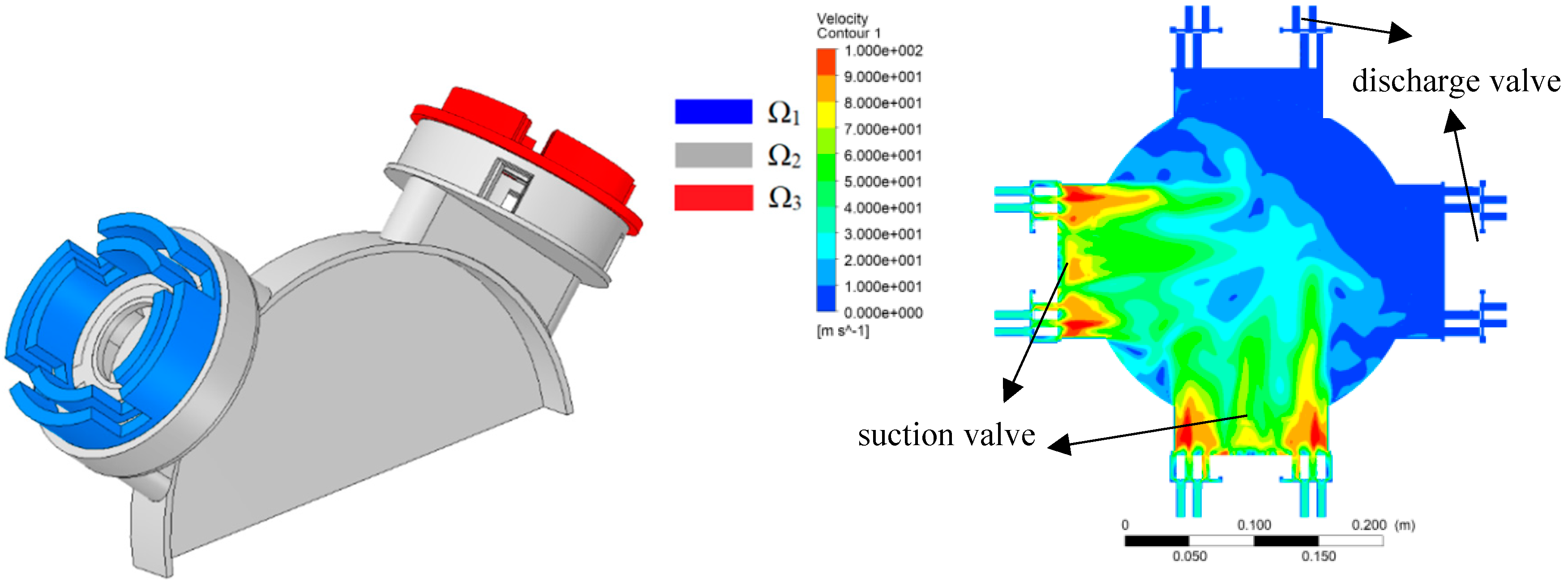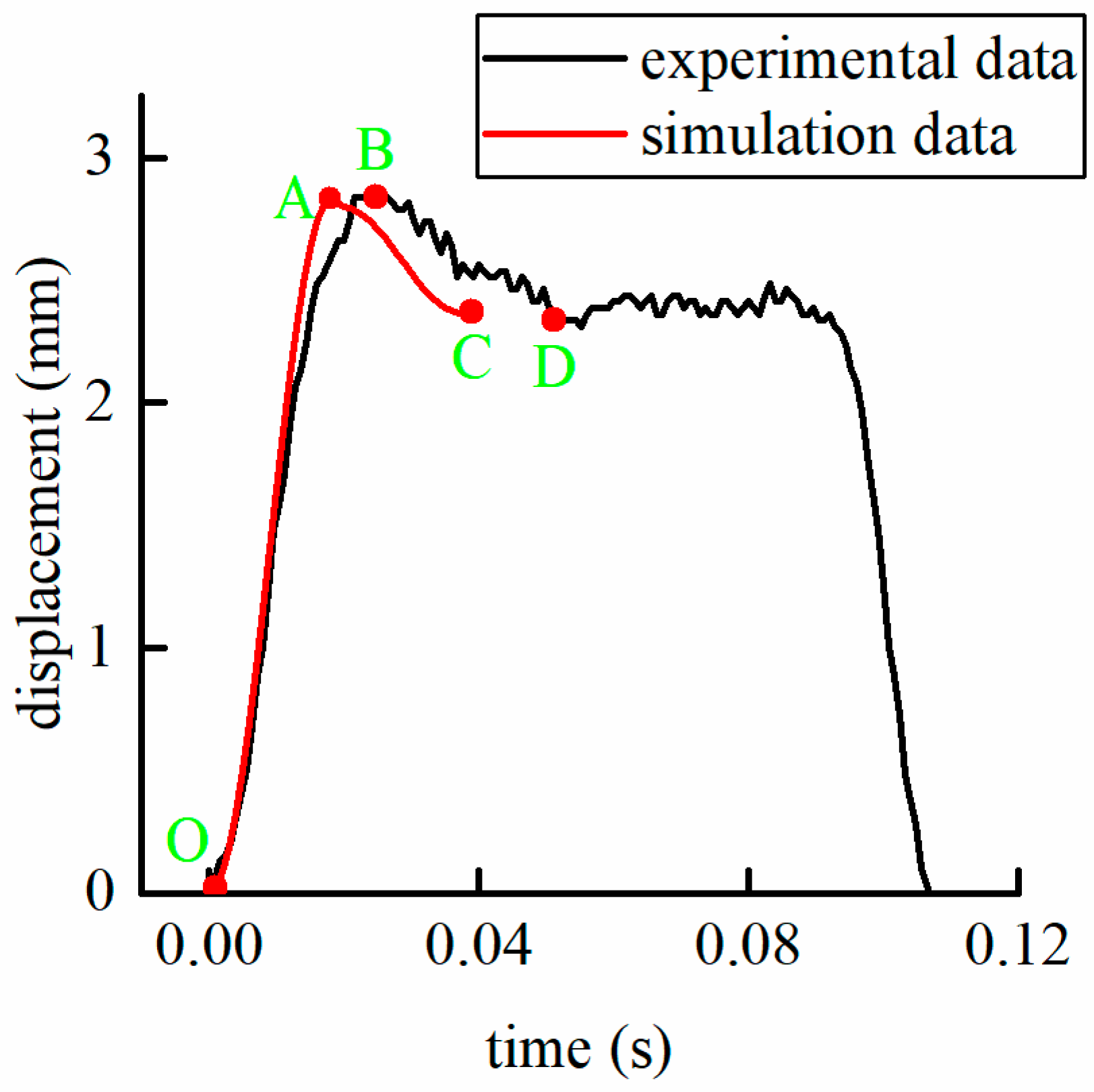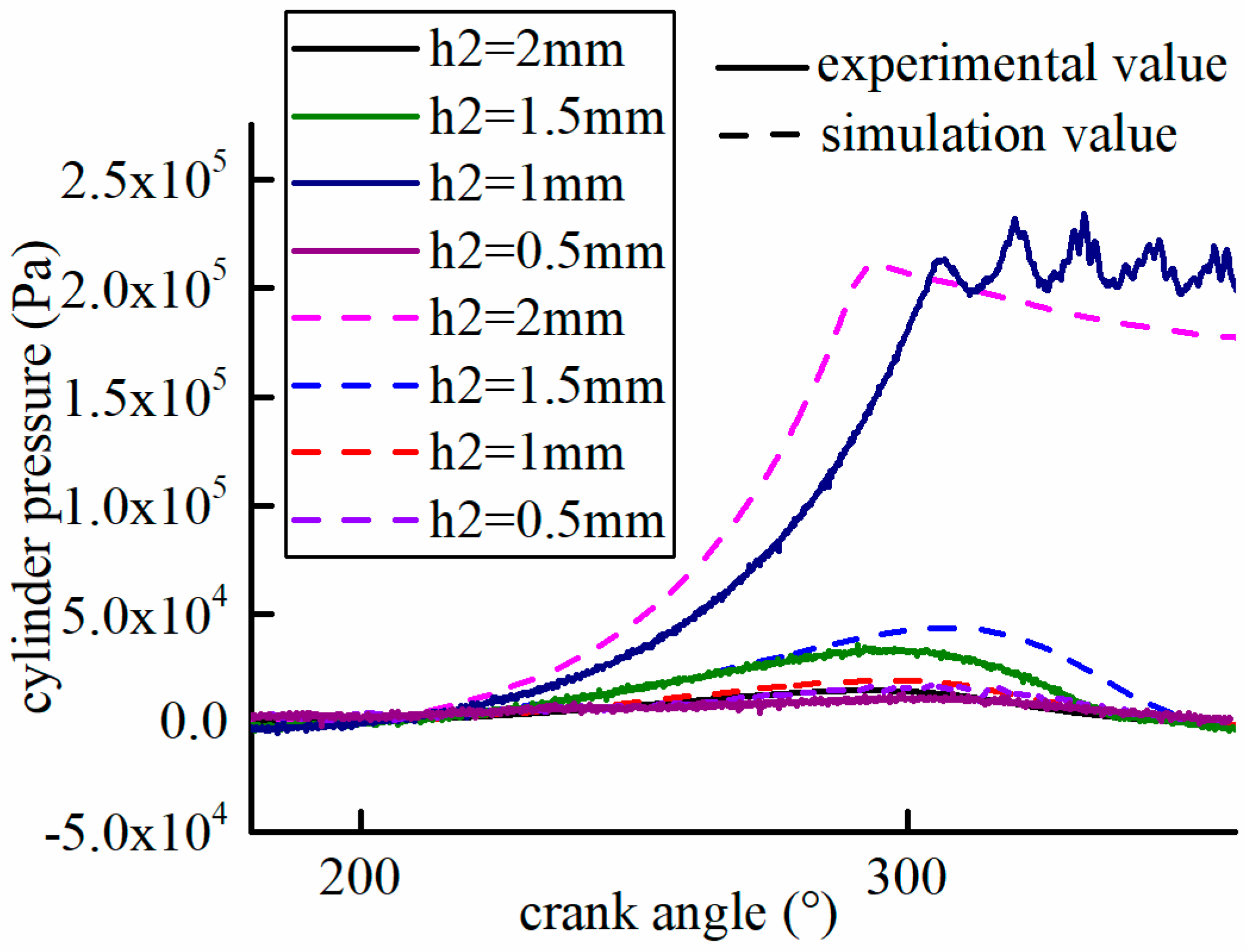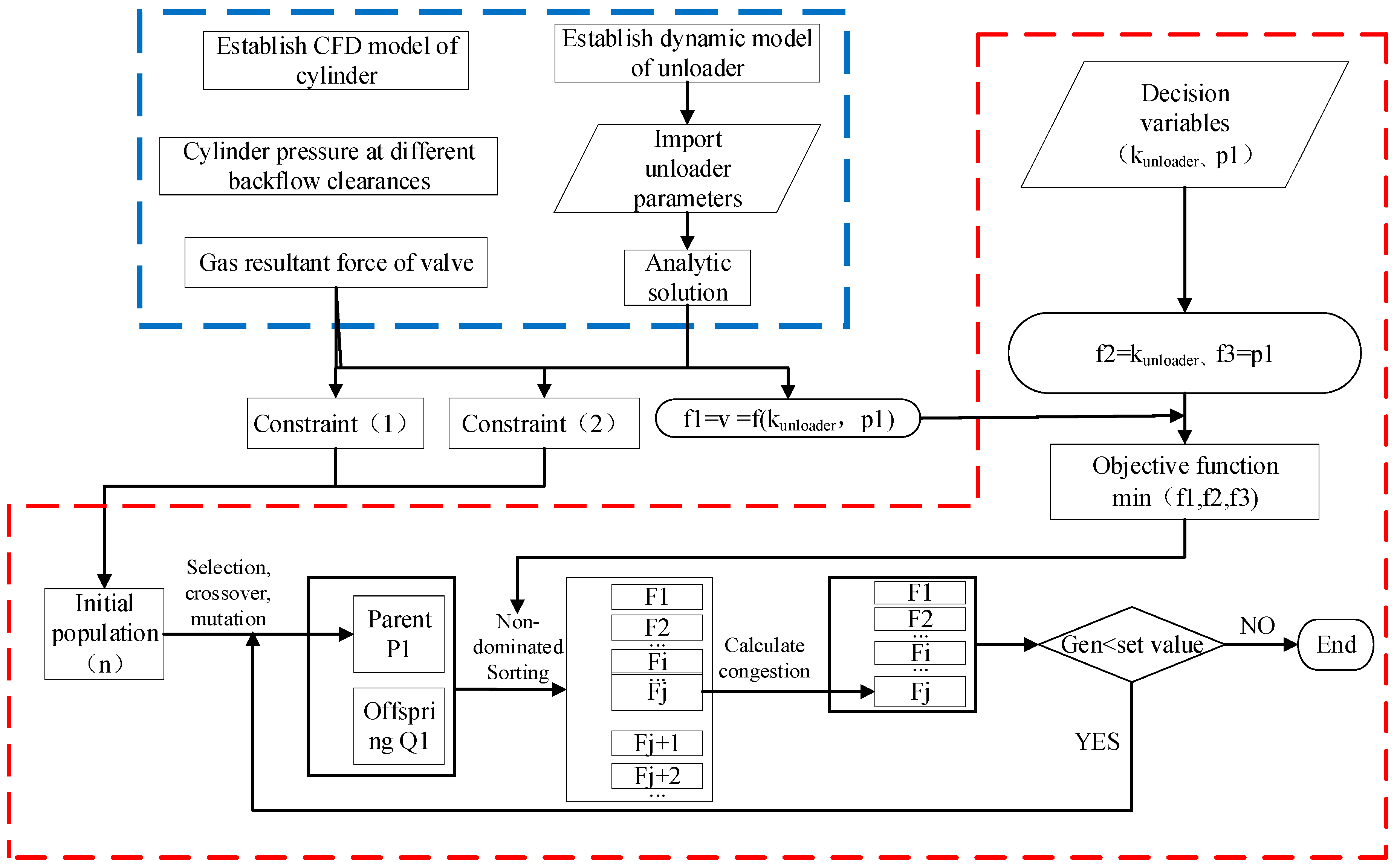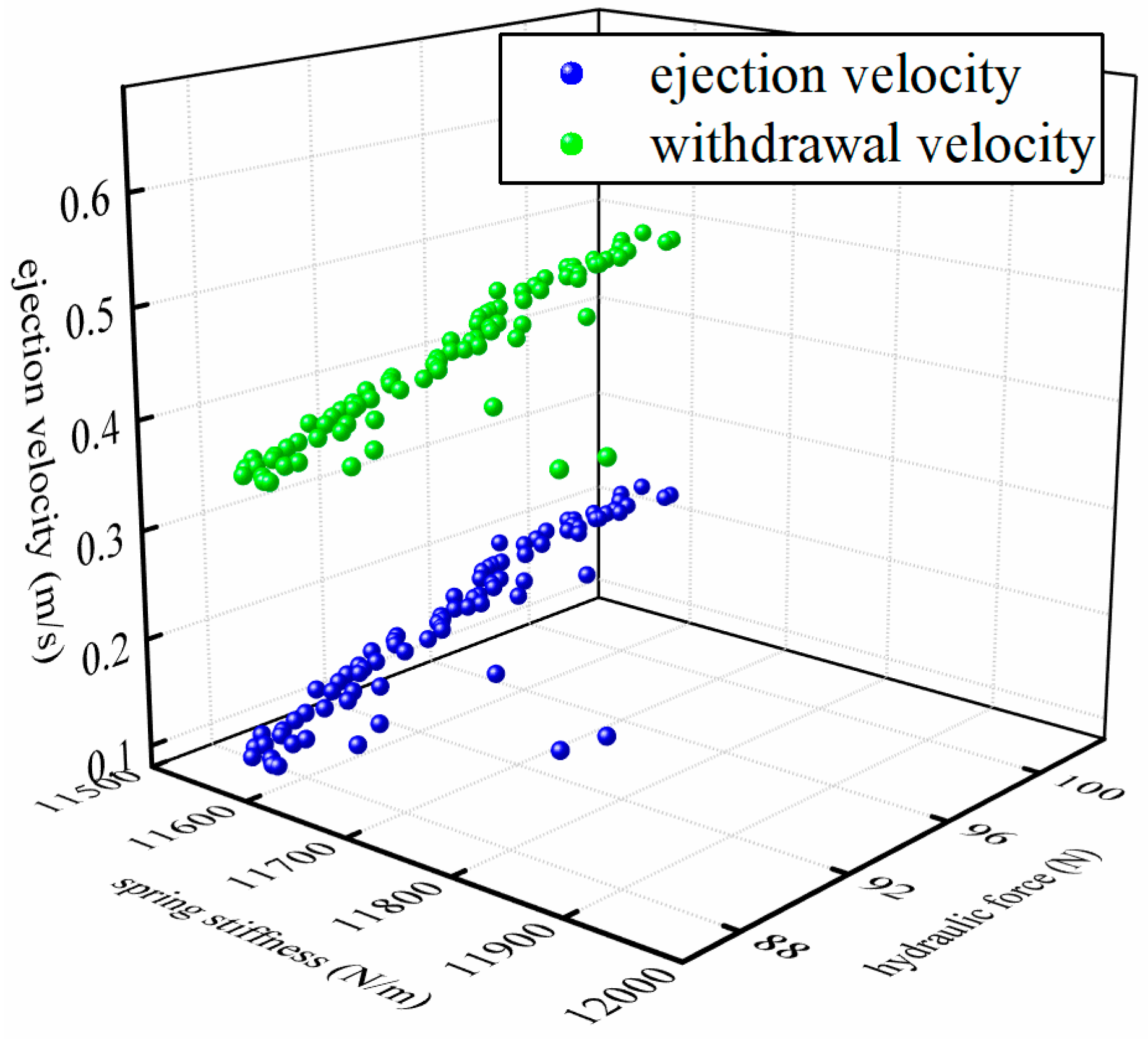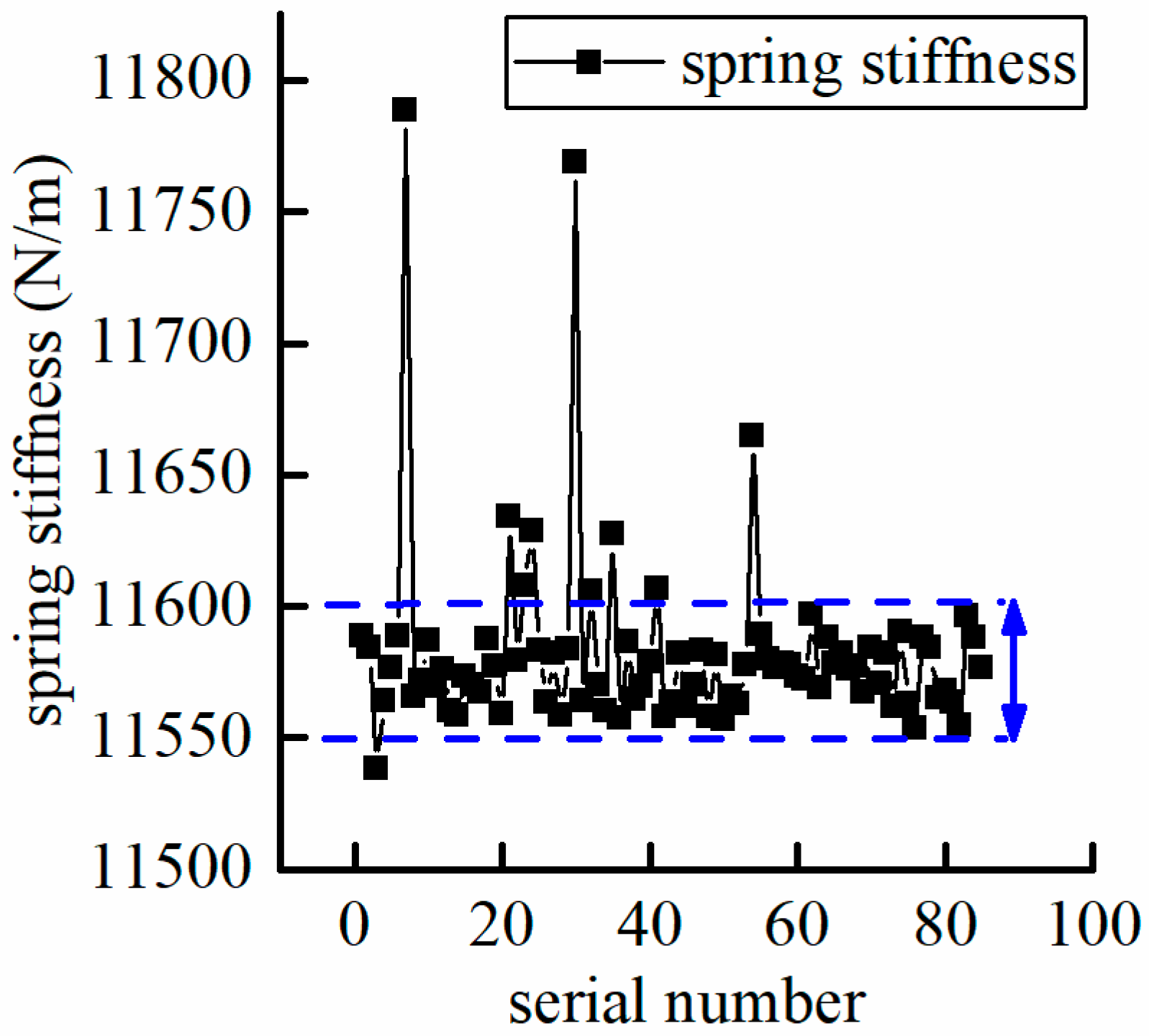A reciprocating compressor is widely used in the petroleum, chemical, metallurgy, national defense and other industries, and is an indispensable equipment for compression and gas transmission [
1]. Due to the variation of production demands, the exhaust volume of a compressor needs to be adjusted to meet the technological requirements [
2]. The capacity control methods of a compressor are various, and there are a lot of descriptions in references [
3,
4]. A stepless capacity control system has been widely applied in production practice due to its wide range of regulation, significant energy-saving effect and the realization of stepless regulation [
5,
6].
A stepless capacity control system involves hydraulic, mechanical control methods and other fields. Many researchers at home and abroad had made further studies on its performance, influence and control methods. Tang et al. studied the thermodynamic performance of a reciprocating compressor under a stepless capacity control condition, and concluded that the suction valve flow resistance decreased during the suction process and the pressure fluctuation in the cylinder decreased, but the backflow resistance increased during the backflow process, which had a negative impact on the power and efficiency of the compressor [
7]. Li et al. designed a stepless capacity control system for a reciprocating compressor based on a new type of rotary control valve [
8]. Wang et al. established an improved mathematical model of a reciprocating compressor under the capacity control condition, and analyzed the influence of the hydraulic force, stroke and speed of the actuator on the gas pressure of the cylinder [
9]. Liu et al. established a mathematical model including the compressor, actuator and hydraulic system, and analyzed the influence of oil pressure, holding time, hydraulic cylinder diameter and reset spring stiffness on the compressor [
10]. Cao et al. used computational fluid dynamics (CFD) software to analyze the internal flow of the hydraulic distributor, and optimized the structure of the distributor through the simulation results [
11]. Hong et al. established a thermodynamic mathematical model of a reciprocating compressor under stepless capacity control conditions, and designed a stepless capacity control system including a hydraulic distributor [
12]. Wang et al. studied the dynamic characteristics of the valve of a reciprocating compressor with capacity control system, and optimized the valve spring and the reset spring of unloader [
13]. Jin et al. considered the dynamic thermal cycle of the valve and established the dynamic model of the valve of a reciprocating compressor under a capacity control system based on the l-k actual gas state equation [
14]. Wang et al. conducted a simulation study on different capacity control methods to compare the compressor shaft power and mechanical efficiency, which was conducive to the optimal design of capacity control system [
15]. Xu et al. studied the dynamic characteristics of a reciprocating compressor with capacity control system. The connecting rod force and normal force were both within the range. Moreover, it had little influence on the uneven axial velocity of the compressor, and the flywheel moment could completely satisfy the capacity control condition, and the capacity control system has little influence on the dynamic performance of the compressor [
16]. Zhao et al. studied the influence of spring stiffness and hydraulic pressure on the characteristics of the actuator through experiments, and proposed that dynamic response performance and working life should be considered in the design of the actuator [
17]. Tang et al. studied the dynamic characteristics of the suction valve in the stepless capacity control system of a reciprocating compressor. The stepless capacity control system changed the dynamic characteristics of the suction valve, which was beneficial to prolong the life of the valve plate [
18]. Although many scholars had built the model of the reciprocating compressor with the actuator, and analyzed the influence of the parameters, they had not considered the effect of the valve plate on the parameter design of the actuator. On the other hand, the simple design of a single target was carried out, so all parameters could not be optimized at the same time. The optimization of a single target might lead to the deterioration of other parameters.
At present, the research on the cylinder flow field of a reciprocating compressor was mainly based on two-dimensional or three-dimensional numerical simulation. He et al. constructed the three-dimensional fluid structure interaction model of a refrigerator compressor, which provides a reference for the testing and optimization of a compressor [
19]. Jonatas et al. studied the heat transfer phenomenon inside a reciprocating compressor by constructing a three-dimensional discrete model of the solid and fluid [
20]. Wu et al. built a CFD model of the reciprocating compressor with stepless capacity control system, and obtained the gas pressure field distribution of the cylinder and valve during the working process of the reciprocating compressor [
21]. Xiao et al. used dynamic grid technology to simulate the working process of a reciprocating compressor cylinder and analyzed the influence of related parameters on pressure loss [
22]. Fluent is a widely used CFD software with a wide range of applications, covering basically all fluid-related fields, high stability and efficiency. It is an extremely effective method to use Fluent to simulate the cylinder pressure of a reciprocating compressor.
In this paper, a mathematical model of the actuator is constructed, including the parameters of hydraulic force, resultant gas force of valve plate, spring force, and the cylinder pressure. The motion equation of the actuator under the condition of capacity control is obtained. Then, a three-dimensional model of the compressor cylinder and valve is built through CFD to simulate the cylinder pressure under different backflow clearance, and the relationship between the backflow clearance and the resultant gas force of the valve plate is obtained. Finally, with the design variables of the hydraulic force and spring stiffness, and the objective functions of ejection or withdrawal impact velocity and backflow clearance, the parameters of the actuator were optimized with the NSGA-II (Non-dominated Sorting Genetic Algorithm – II). The multi-objective optimization design improves the actuator parameters of the stepless capacity control system of reciprocating compressor and improves the system security and reliability.
